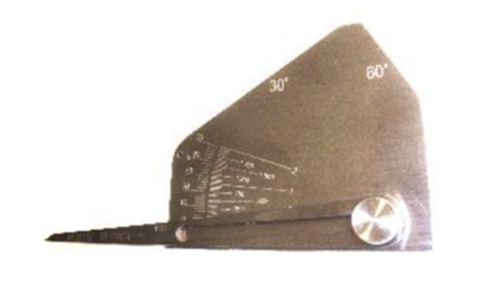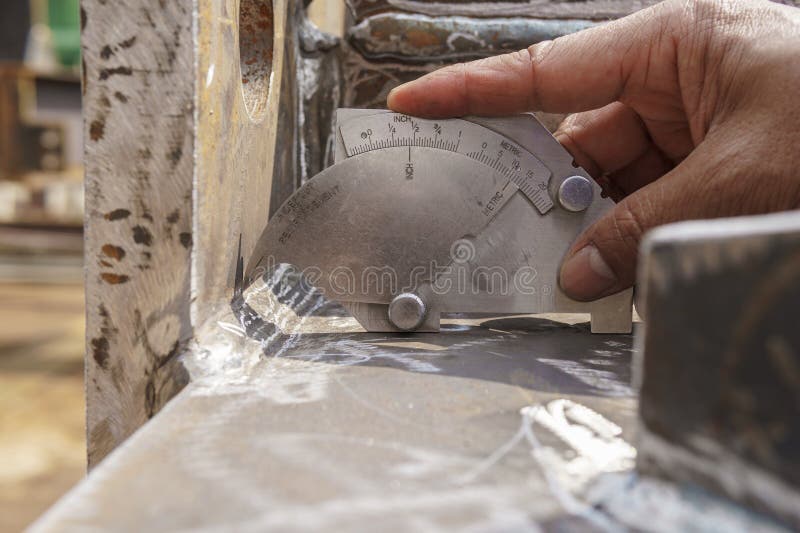The Ultimate Overview to Fillet Weld Quality Control: Making Certain Stamina and Sturdiness in Your Welded Joints
In the world of welding, making certain the toughness and sturdiness of fillet welds is paramount for the stability of welded joints. As we begin on this expedition of fillet weld high quality control, we will certainly uncover necessary variables that influence weld stamina, dig right into reliable inspection techniques, and go over strategies for avoiding typical weld problems.
Relevance of Fillet Weld Quality Control
Making sure proper fillet weld high quality control is extremely important in guaranteeing the structural honesty and long life of bonded components in numerous industries. Fillet welds are typically utilized in architectural steelwork, bridges, pressure vessels, pipelines, and other important framework where the toughness of the weld is critical to overall safety and security and performance. Quality control procedures such as aesthetic assessments, non-destructive testing, and adherence to welding procedures aid recognize possible issues like absence of combination, incomplete penetration, undercutting, or too much support.
Trick Elements Impacting Weld Stamina
Achieving optimal weld toughness needs careful factor to consider of different key aspects that influence the stability and longevity of the bonded joint. The very first vital aspect appertains joint prep work, which includes cleaning the base steels to remove any type of contaminants that could damage the weld. Additionally, the fit-up of the joint is crucial to make sure proper penetration and blend of the filler material.
The choice of the ideal welding technique and criteria also plays a considerable duty in identifying weld toughness. Aspects such as warm input, traveling rate, and electrode angle can impact the top quality of the weld. Furthermore, keeping the appropriate interpass temperature level during multi-pass welding is essential to stop splitting and make certain a strong bond in between the layers.
Moreover, the selection of filler product and its compatibility with the base metals is essential for attaining high weld strength. Utilizing filler product with the ideal mechanical residential properties can boost the total stability of the weld. Post-weld heat treatment and appropriate assessment methods are vital steps in guaranteeing the strength and resilience of the welded joint.
Examination Approaches for Weld Stability

Another crucial assessment approach is liquid penetrant screening, where a liquid dye is related to the weld surface - Gauge Fillet Weld. The dye seeps into any type of surface-breaking flaws, making them why not check here visible under UV light. This approach is effective for detecting imperfections that might not be visible to the nude eye


Ultrasonic screening is likewise commonly used for inspecting weld stability. High-frequency acoustic wave are guided right into the weld, and any type of disturbances in the sound wave pattern indicate possible defects like fractures or absence of combination.
These assessment methods play a vital function in making sure the high quality and dependability of welds, eventually adding to the overall strength and resilience of bonded joints in industrial settings.
Protecting Against Usual Weld Problems
In order to preserve the structural honesty of welded joints in commercial applications, it is crucial to execute safety nets to address common weld problems. One common defect is lack of fusion, where the filler product stops working to bond adequately with the base steels, bring about weak points in the weld. This can be avoided by guaranteeing appropriate heat control and using the correct welding technique.
One more constant concern is porosity, brought on by gas entrapment in the weld metal during the welding process. To avoid this, it is crucial to cleanse the base metals thoroughly, utilize dry electrodes, and keep a suitable welding setting with appropriate ventilation.
In addition, splits in welds can endanger the joint's strength. To prevent this issue, it is very important to manage the cooling rate after welding, make use of preheating when necessary, and select appropriate welding criteria.
Enhancing Weld Toughness With Appropriate Techniques
One critical approach to improve weld toughness is to guarantee appropriate weld grain placement. By positioning the weld bead properly within the joint, the weld's strength and resistance to tiredness can be significantly enhanced.
Furthermore, utilizing ideal pre-weld and post-weld warmth treatments can help in reducing recurring anxieties and enhance the weld's sturdiness, making it a lot more immune to click reference fracturing and failure with time. One more method to enhance weld durability is to utilize high-grade welding consumables and base materials. Choosing the best filler steel and making sure the sanitation of the base metals can stop inclusions and other issues that might endanger the weld's longevity. By executing these proper methods, welders can guarantee that their bonded more tips here joints exhibit phenomenal strength and longevity, satisfying the finest quality standards.
Verdict
To conclude, preserving top quality control standards for fillet welds is important for guaranteeing the strength and durability of welded joints. By understanding the key aspects affecting weld stamina, making use of assessment methods for weld integrity, avoiding typical weld flaws, and utilizing correct strategies, welders can enhance the overall longevity of their welds. It is necessary to focus on high quality control steps to create long-lasting and dependable welded joints.
In the world of welding, making certain the strength and resilience of fillet welds is vital for the integrity of bonded joints. As we begin on this expedition of fillet weld quality control, we will reveal necessary elements that affect weld strength, dive into efficient evaluation approaches, and discuss techniques for preventing common weld problems.Accomplishing optimum weld toughness requires mindful consideration of various essential variables that influence the integrity and sturdiness of the bonded joint (Gauge Fillet Weld).In final thought, keeping high top quality control requirements for fillet welds is critical for making sure the stamina and longevity of welded joints. By recognizing the key elements influencing weld toughness, utilizing assessment techniques for weld honesty, preventing usual weld defects, and utilizing correct methods, welders can improve the general sturdiness of their welds